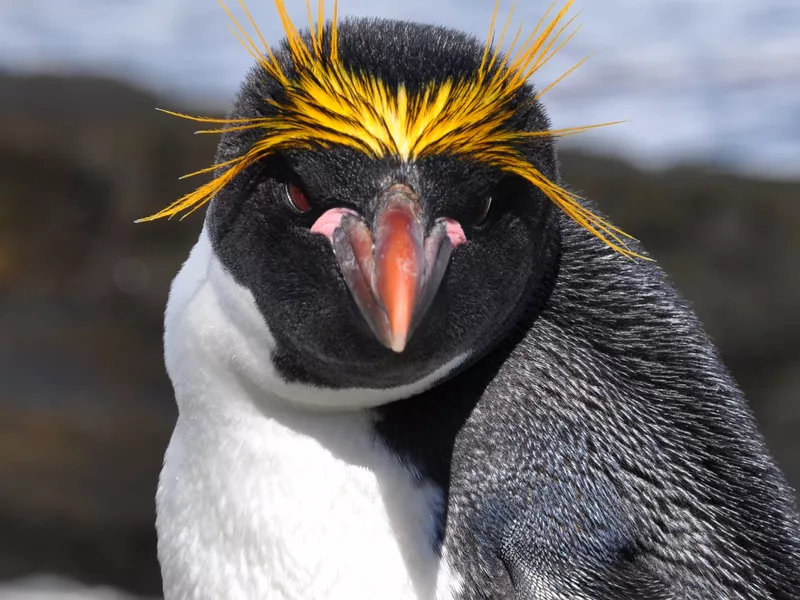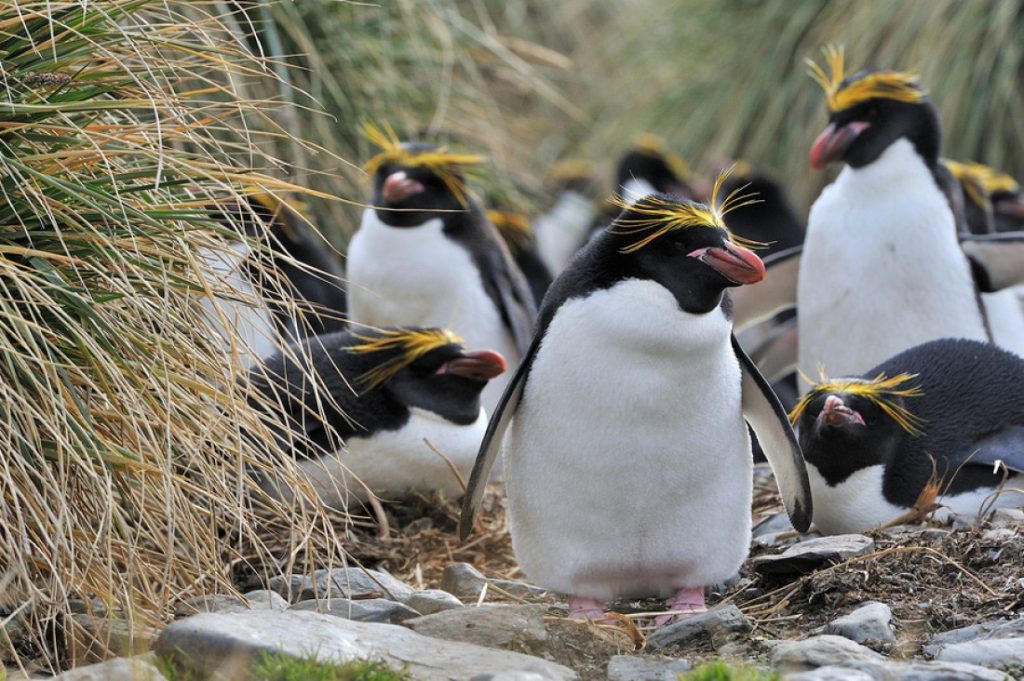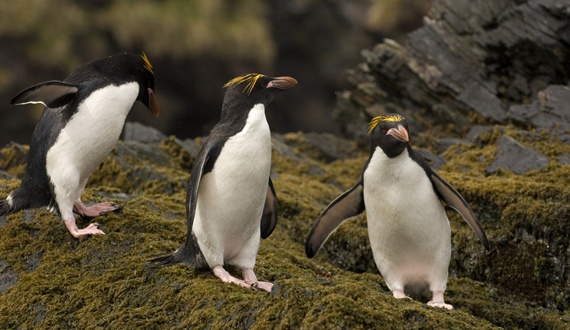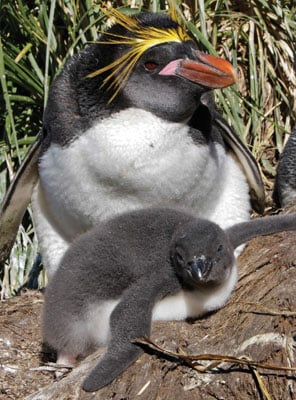
Macaroni penguins are one of the six species of crested penguins and are known for their distinctive yellow-orange crest feathers that protrude from the top of their head. These charismatic birds are found primarily in the sub-Antarctic and Antarctic regions and are known for their unique behaviors and adaptations that allow them to survive in some of the harshest environments on the planet.
Macaroni penguins are considered medium-sized penguins, measuring approximately 70 cm (28 in) in height and weighing between 3.5 and 5 kg (7.7 and 11.0 lb). The species is sexually dimorphic, with males being slightly larger than females. Like all penguins, they have a streamlined body shape that allows them to move efficiently through the water.
The distinctive yellow-orange crests on their heads are what give macaroni penguins their name. The crest feathers can grow up to 8 cm (3 in) in length and are thought to be used in displays during courtship and mating. Their bodies are primarily black with a white belly and a distinctive white stripe that runs from the base of the bill to the back of the head. Like all penguins, macaroni penguins have wings modified into flippers that are used for swimming.
Macaroni penguins are found throughout the sub-Antarctic and Antarctic regions, primarily on islands and along the Antarctic Peninsula. They breed in large colonies on rocky, barren slopes and cliffs, often on steep inclines that offer protection from predators. Outside of the breeding season, macaroni penguins can be found in the open ocean, ranging as far north as South Africa and South America.
These penguins are social birds that form large colonies during the breeding season. They are monogamous and will return to the same colony and mate each year. During courtship, males will perform displays using their crest feathers to attract a mate. Once paired, the female will lay two eggs, which are incubated by both parents for approximately 35 days. After hatching, the chicks are fed by regurgitation and will remain in the nest for several weeks before fledging.
In the wild, macaroni penguins feed primarily on krill, small fish, and squid. They are strong swimmers and can dive to depths of up to 70 meters (230 feet) in search of food. Like all penguins, they are vulnerable to predation by marine mammals, birds of prey, and other predators.



The macaroni penguin is listed as vulnerable on the International Union for Conservation of Nature (IUCN) Red List of Threatened Species. Their population has declined by an estimated 30% over the last three generations, with climate change and commercial fishing being the primary threats to their survival. Changes in sea ice patterns and warming ocean temperatures are affecting the availability of their primary food source, krill, while overfishing is reducing the availability of fish and squid.
Efforts to protect macaroni penguins include the establishment of protected areas and the regulation of commercial fishing. Research is also being conducted to better understand the impact of climate change on the species and to identify strategies for mitigating its effects.